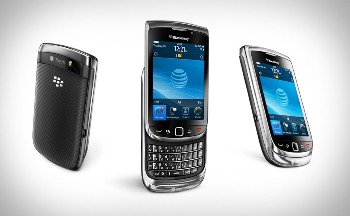BlackBerry Torch Is Better For Business Than iPhone: Review

Apple’s integrated combination of hardware and software is compelling, but can’t hold a candle to RIM’s business features, as seen in the BlackBerry Torch 9800
With the release of Research In Motion’s BlackBerry Torch 9800 smartphone, the company may have a device that stacks up to Apple’s iPhone 4. Despite a somewhat confusing feel to the BlackBerry interface, the Torch compares well to the tight little package of the iPhone, which still has a way to go as a business platform. We decided that putting these two devices head-to-head was fair, given their similarities in pricing and basic capabilities.
Our field tests consisted of everyday use of the devices over multiple days, with Andrew using the Torch and P. J. taking the iPhone 4, followed by an afternoon performing phone reception tests around downtown San Francisco. For our two-pronged “walkabout” test, we used Google Voice to simultaneously dial both devices to test incoming reception, then placed outbound calls back to our office from each device. For this phase, P. J. removed the Apple-supplied accessory bumper from the iPhone 4, to make sure we were examining the device’s true performance in the field.
During our walkabout, both devices performed adequately, which, given the awful AT&T performance we are accustomed to in our San Francisco office, came as a pleasant surprise. The Torch fared slightly better on incoming tests, receiving 11 of our 14 test calls, while the iPhone received 9 of 14. In general, we think this small disparity was due to the Torch’s eagerness to flop to EDGE (Enhanced Data for Global Evolution) or GSM when its 3G signal was weak. On the other hand, both phones successfully completed every outbound call attempt.
The Torch, with prices starting at $499 (£324), comes with 4GB of on-board storage and a 4GB MicroSDHD card (the device supports cards of up to 32GB). Our 16GB iPhone 4, on the other hand, cost $599 (£389) before rebates and discounts.
Physical features
The Torch and iPhone also compare well when sitting in one’s pocket. The iPhone is a little thinner, by about one-fifth of an inch, and lighter by almost an ounce; one might be able to detect this difference when holding both devices, but it’s not terribly material.
The Torch’s extra thickness is due to the vertical slide-out QWERTY keyboard, which RIM complements with touch-screen-based, soft keyboards for both portrait and landscape modes (the latter only with the slide closed). Andrew liked the on-screen keyboard in landscape mode but preferred the physical keyboard when holding the phone in portrait mode.
However, with the slide open, Andrew thought it was a bit of a stretch from the natural typing grip to reach the top of the touch screen to access the new notification area, and resorted to using the touchpad and hotkeys more often than the touch screen in this circumstance.
The iPhone features a soft keyboard only; in P. J.’s experience, the iPhone’s touch-screen keys can be challenging for anyone with a ring size above nine.
Where the iPhone 4 truly excels is its display, which is only three-tenths of an inch larger than the Torch’s but offers landscape or portrait modes with 960-by-640-pixel resolution at 326 pixels per inch. The Torch display seems antiquated in comparison, with its fixed-mode 360 by 480 with 188 ppi. Long story short, the iPhone 4 can play back 720p H.264 high-definition media, while the Torch can’t display the video (but will play the sound).
Likewise, the iPhone can also record 72 0p HD video (like we’ve seen recently from Android devices such as the Droid X), while the Torch can only record at 640 by 480 video resolution. Still imaging on both devices is of the 5-megapixel class, and both offer a built-in flash. The camera application on the Torch is significantly enhanced over previous BlackBerry models, however, now offering scene modes including face detection, low light and fast motion modes.